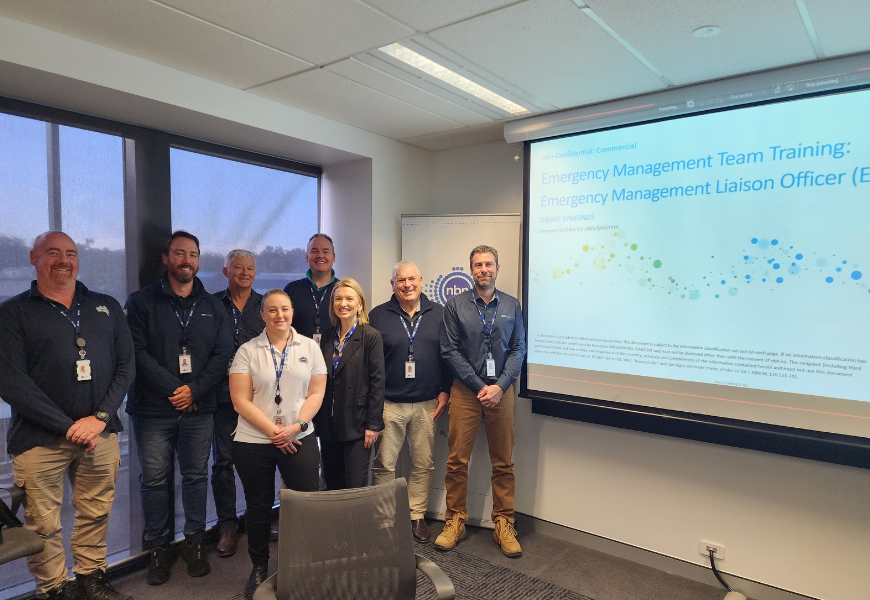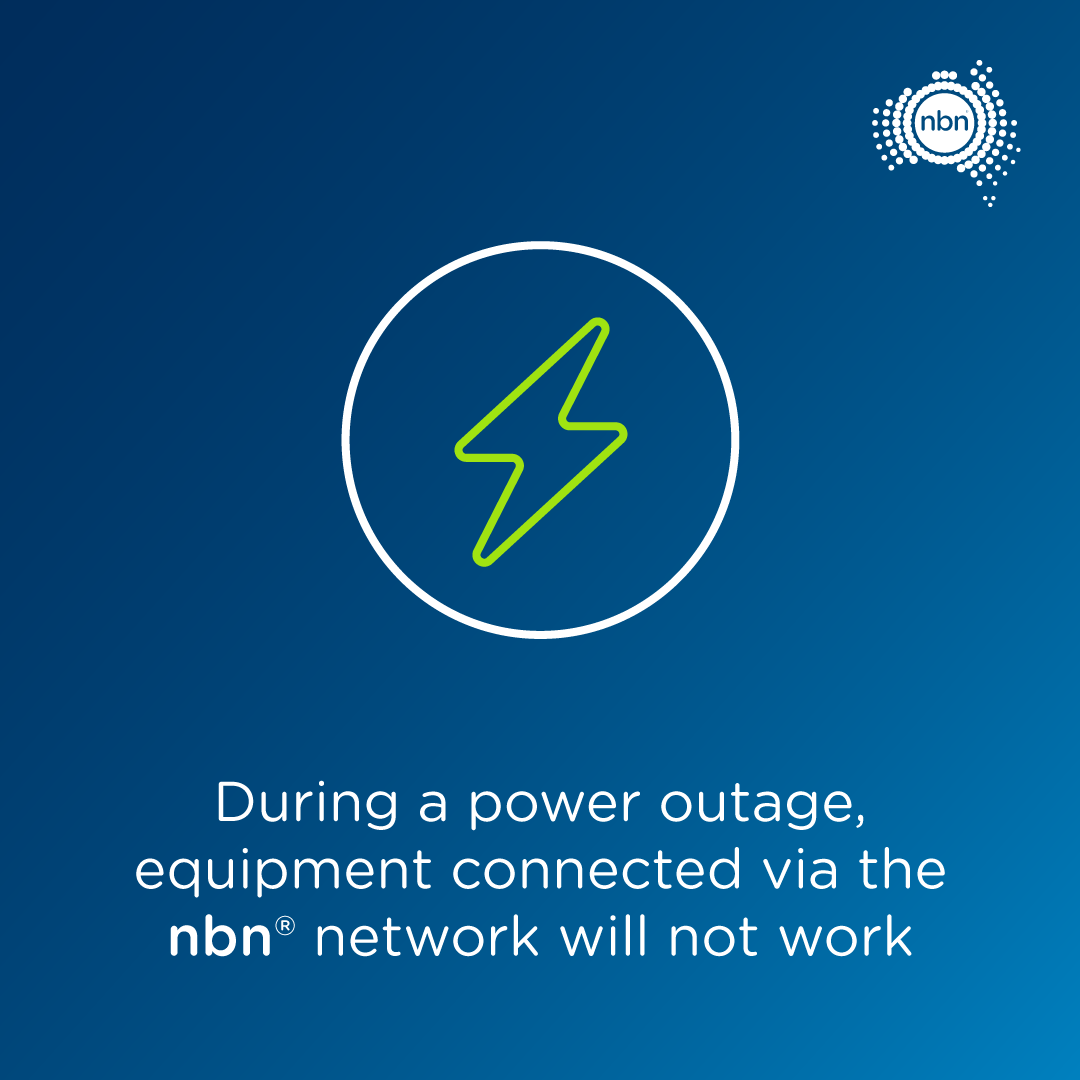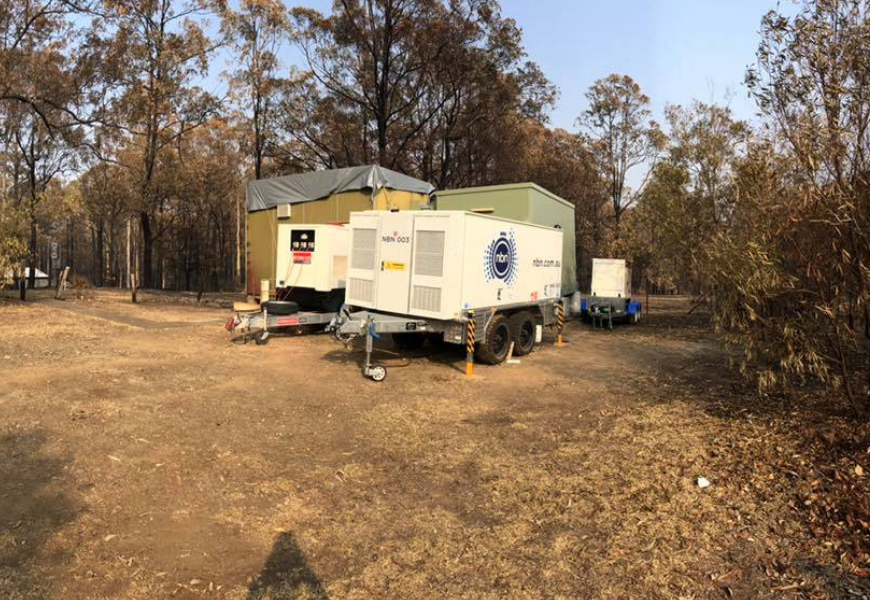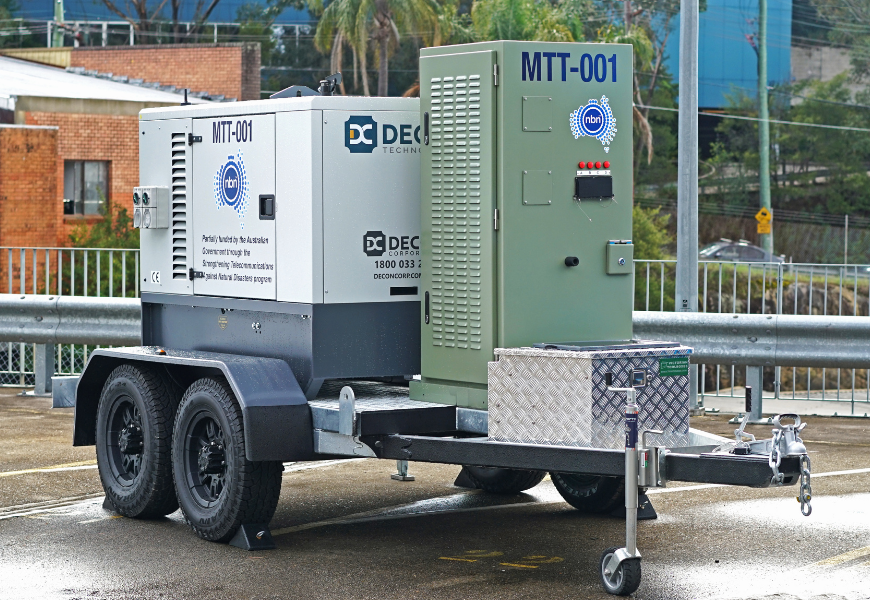
How to prepare: nbn and emergency events
Last updated 2 October 2024
4-minute read
Understand how the nbn® network may operate during an emergency event – plus tips to help you, your community and local businesses to be prepared.
Download Emergency Preparedness Fact Sheets
At nbn, we understand the important role our network plays in helping to keep people, businesses and communities connected – especially in times of disaster.
We are urging communities to work together and be prepared for emergency events. Regularly test residential evacuation and business continuity plans, and – most importantly – be as safe and connected as possible.
Now is the time to begin planning and to be prepared for what could happen.
How nbn prepares for emergencies
Behind the scenes, we’re always working to improve the nbn network’s resiliency and the way we prepare for, respond to, and recover from emergency events.
From rolling out more fibre across the nation, to continuing to invest in Temporary Network Infrastructure to help restore the nbn network quickly and safely when impacted, the way our network performs during times of disaster is always top of mind.
Over the last few years, as part of the Federal Government’s Strengthening Telecommunications Against Natural Disasters program, we’ve installed more than 1000 nbn Disaster Satellite Services across Australia in jurisdictionally nominated emergency management sites and evacuation centres.
And our teams work closely with emergency services and power companies to prepare for potential disasters and ensure we can safely restore affected connectivity as soon as possible.
Our Emergency Management Liaison Officers
Also critical to nbn’s Emergency Management response are our Emergency Management Liaison Officers (EMLOs). Located across Australia, EMLOs play a vital role in keeping nbn connected with agencies involved in Emergency Management year-round and, most importantly, during an emergency event.

Some of nbn's Emergency Management Liaison Officers during training.
To strengthen these vital relationships and to be even better prepared, our EMLOs participate in regular EMLO training programs, including working alongside Telstra’s Emergency Services Liaison Officers (ESLOs), emergency services, government departments, industry and community support agencies across Australia.
During 2023, we ran two-day workshops in states and territories across Australia that aimed to provide an overview of the emergency management activities of nbn and Telstra’s infrastructure division, highlighting how important it is for emergency services, government departments, industry and community support agencies to work together before, during and after emergencies.
This all contributes to bolstering our relationships and coordination, as well as helping nbn deliver for communities in times of need.
How you can prepare for emergencies
The nbn network is designed to withstand as many disruptions as technically possible with resilience built-in – if part of our network is impacted, overall, it can continue to operate. Yet, in emergencies where physical equipment damage occurs to the power or telecommunications infrastructure, communications connectivity may be lost.
It’s also worth noting that, during emergencies, most nbn service disruptions are caused by power blackouts.

During a power outage, equipment connected via the nbn network will not work.
While parts of our network have built-in power back up, major power outages may last longer than the power reserves.
“Our teams work hard to minimise loss of connectivity on the nbn network, yet there are times – such as during bushfire and floods – when customers may need to rely on alternative connectivity,” says Chris Cusack, General Manager, nbn Local at nbn.
“As we all know, communication is never more important than when disaster strikes so it’s crucial to be well-prepared.”
This includes regularly testing residential evacuation and business continuity plans.
It’s also important to understand how certain devices may be affected by power outages. Devices, such as medical alarms, may not always be compatible with the nbn network – including, but not limited to, instances of a power blackout.
Existing copper network
If your premises is located within a Fixed Wireless or Sky Muster® satellite area, you may be able to keep your existing landline phone service active across the copper network. For more information, please speak to your phone and internet provider.
Stay connected
Follow these crucial pointers to help with effective communication during emergencies:
Be prepared
If it’s important for you and your business or community group to always remain connected, consider exploring alternative communication and power solutions, and regularly test these to ensure they function effectively during emergencies. Additionally, it’s also essential to understand your local council’s emergency management plans and know where to go in times of crisis.
Stay mobile
Create an emergency kit with a fully charged mobile phone and a portable battery pack. This will be invaluable during power outages or if your nbn network connection is affected. Remember to conserve battery by turning off mobile data for unnecessary apps.
Stay updated
During emergencies, local radio provides crucial information. Include a battery-powered radio in your emergency kit. Additionally, follow emergency services on social and news channels, including your state fire, rescue and police services, and utility providers, such as nbn (@NBN_Australia).
Back up
Ensure you can access critical information and essential documents from anywhere. Consider creating digital backups on a USB drive or in the cloud. These documents may include insurance policies and financial records.
What to expect from nbn during an emergency
During an emergency, our highest priority is maintaining and restoring the nbn network so emergency services and communities can stay connected and safe.
In the event of a disaster, nbn will prioritise restoring services to impacted communities. This will include special consideration of essential services, community infrastructure and business services in any restoration planning.
Innovative equipment
To help keep customers connected during times of disaster and in the aftermath, nbn has invested in an extensive suite of Temporary Network Infrastructure (TNI) and Temporary Emergency Management Solutions (TEMS).

nbn's Network on Wheels deployed in the field following a bushfire.
Developed in-house and strategically pre-positioned across the nation, these innovative pieces of equipment keep the power running in the event of an outage or site isolation, or can be rapidly deployed to support communities during the relief and recovery phases of an emergency – either to restore the nbn network or provide temporary internet connectivity to those most impacted by the emergency.
“Temporary Network Infrastructure, like our Hybrid Power Cubes, Multi Tech Trailers and Emergency Response Vehicle, all play an important role in restoring nbn services and keeping customers connected,” says Chris.
“And our Temporary Emergency Management Solutions, requested via jurisdictional emergency management arrangements, help residents evacuated from their homes, and support emergency services as they carry out their vital work.”
To provide temporary access to voice and broadband services for those in the community most affected by outages, nbn may be asked to deploy such equipment to evacuation centres and community hubs.*
nbn’s Temporary Network Infrastructure includes:
- Hybrid Power Cubes
- Network on Wheels (NoW) and Wireless on Wheels (WoW)
- Point of Interconnect on Wheels (PoW)
- Wireless Mast Trailer
- Fly Away Kits
- Multi Tech Trailer
- Emergency Response Vehicle
nbn’s Temporary Emergency Management Solutions include:
- nbn Sky Muster® Trucks
- Fly Away Kits

nbn's Multi Tech Trailer
* Requests are made via jurisdictional emergency management processes to align with the emergency management response.
